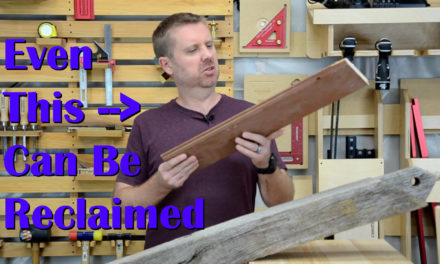Concrete Sealing
Finding a concrete sealer can be daunting with all the options out there. We put in the research time so you don’t have to! This know-how video will run through your options and outline the use cases for each type of product. This is a helpful video in and of itself, but it is also the 2nd of three videos on sealing concrete:
Part 1 – Cleaning Concrete (https://youtu.be/pm_-GpjN2Fw)
*Part 2 – Choosing a Concrete Sealer*
Part 3 – Sealing Your Concrete (https://youtu.be/XtXopmXJ3mo)
Bonus – Sealing New Concrete (https://youtu.be/h8xU8sT8BeA)
In this video we’ll cover four primary types of sealers:
- Penetrating sealers
- Acrylic sealers
- Polyurethanes
- Epoxies
We spend the bulk of the time covering the maze of penetrating sealers. Primarily due to these being the best choice for residential, outdoor concrete where you don’t want the appearance or surface of the concrete altered. They are super easy to apply, will prolong the life of you concrete, and make annual cleaning a whole lot easier!
Chapter Links
00:51 Types of Concrete Sealers
01:16 Characteristics of Penetrating Sealers
02:48 Penetrating Sealer – Silane
03:23 Penetrating Sealer – Siloxane
03:43 Penetrating Sealer – Silicate
04:48 Penetrating Sealer – Siliconate
05:48 Recommended Penetrating Sealer
06:04 Film forming Sealers
06:13 Acrylic
07:04 Polyurethane
07:39 Epoxy Subscribe
Polyaspartic sealers are not covered in this video mainly due to these not being a very DIY friendly product. Application can be quite tricky.
Which Concrete Sealer?
There are four common types of sealers:
- Penetrating
- Acrylic
- Polyurethanes
- Epoxies
This video focuses on the penetrating sealers since they can be quite confusing, but an overview of other types of sealer will be covered.
Before you seal though, make sure that concrete is clean.
General characteristics of penetrating sealers:
- Penetrating sealers are not a film forming sealer. They react within the capillaries (or voids) of concrete. These sealers soak into and underneath the surface almost undetectable once they are dry.
- They provide excellent outdoor exposure protection. These are breathable allowing moisture vapor to escape which is important.
- The finish on these unnoticeable or result in a matte sheen.
- They can last a lifetime, but can be reapplied without removing any previous application.
- Penetrating sealers can be either water based or solvent based – solvent based sealers have a higher content of volatile organic compounds, or VoCs. They also tend to have more of sheen than water based.
Types of Penetrating Sealers
Here’s where things get complicated with penetrating sealers. There are four types all with names that sounds like you need a degree in chemistry to understand.
- Silanes – these have smaller molecules that allow for deeper penetration. These have excellent water and oil repellant properties. Typically used in dense, high PSI concrete, brick, and stone. Due to the smaller molecules, you’ll get lower coverage rates and it may require multiple applications. The downside to silane sealers is they can darken the surface and they can bond with oils to cause staining. So a thorough cleaning is required to avoid staining.
- These sealers are easy to apply with roller or low pressure sprayer
- Siloxanes – a derivate of silanes. Very large molecules, shallow penetration and excellent topical benefits. Good for very porous materials.
- Apply with broom, roller or low pressure sprayer
- Silicates – These sealers result in a chemical reaction with alkalis and calcium hydroxide in the concrete capillaries creating permanent non-soluble chemistry. They provide fairly deep penetration. There are two types of silicate sealers: sodium and lithium. Sodium has been around longer and is typically cheaper. Both types are best used on smooth concrete or machine troweled surfaces (e.g. basements and garages). These sealers can also protect against Radon. The resulting finish will have a polished appearance.
- Apply with roller, low pressure sprayer, floor scrubber or high speed polisher
- Siliconates – These sealers result in a chemical reaction within the capillaries of the concrete forming that forms an internal silicone membrane. These sealers have larger molecules than silicates. Application is more topical and provides better coverage rates. They are best used for reducing moisture intrusion, combating free/thaw cycles, and resisting deep stains. Can be used as a cure and seal finish on freshly poured concrete. These are good primers for painting and very multi-purposed.
- Apply with broom, roller or low pressure sprayer
ToolboxDIY recommends a water-based siliconate sealer for most home owners. It’s easy to apply, it’s effective, and it doesn’t alter the appearance or the surface of the concrete. However, your needs may differ so let’s cover the concrete sealers that are not penetrating but that are film forming; meaning they cure on top of the surface of the concrete.
Film Forming Concrete Sealers
- Acrylics
- Thin film coating, dries quickly
- Interior and exterior use
- Good protection against water and chlorine
- Wears faster, no chemical reaction
- Requires regular maintenance of floor finish or wax
- Can enhance colored, stamped or exposed aggregate concrete
- Range of sheen levels available
- Lifetime: 1-3 years, can become brittle with age
- Solvent or water based (solvent based typically contains more VOCs)
- Polyurethanes
- Thick film coating, good for high-traffic areas
- Interior and exterior use
- Can enhance colored, stamped, or exposed aggregate
- Range of sheen levels available
- Lifetime: Product specific
- Solvent or water based
- Epoxies
- Thick film coating, good for high-traffic areas
- Mainly for outdoor, but also good for garages & basements
- Needs additives for traction
- Glossy finish
- Lifetime: 5-7 years








